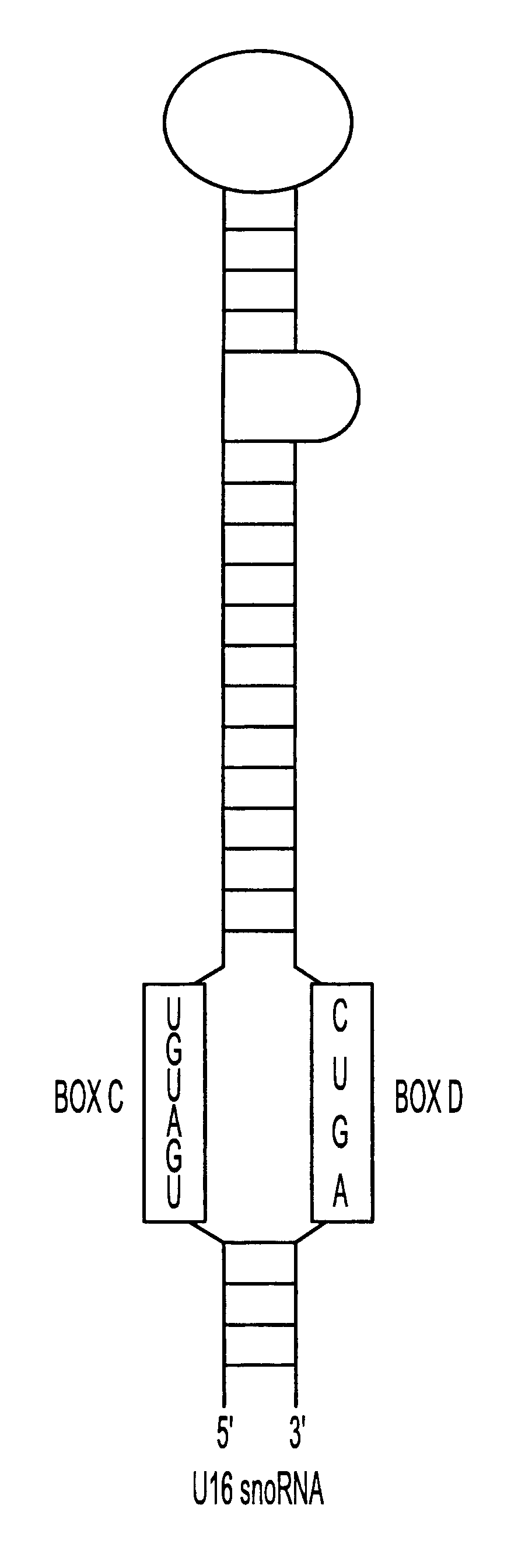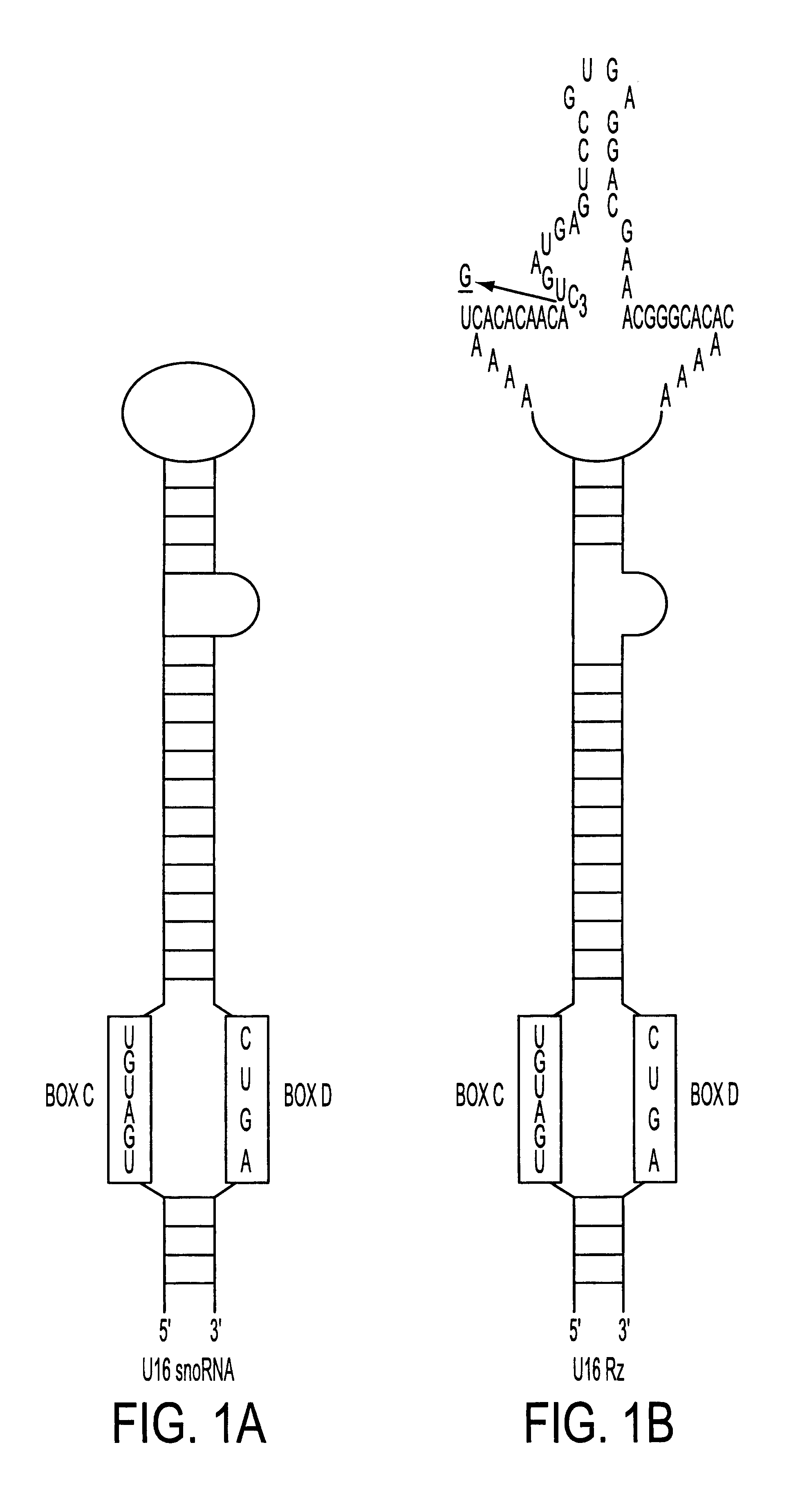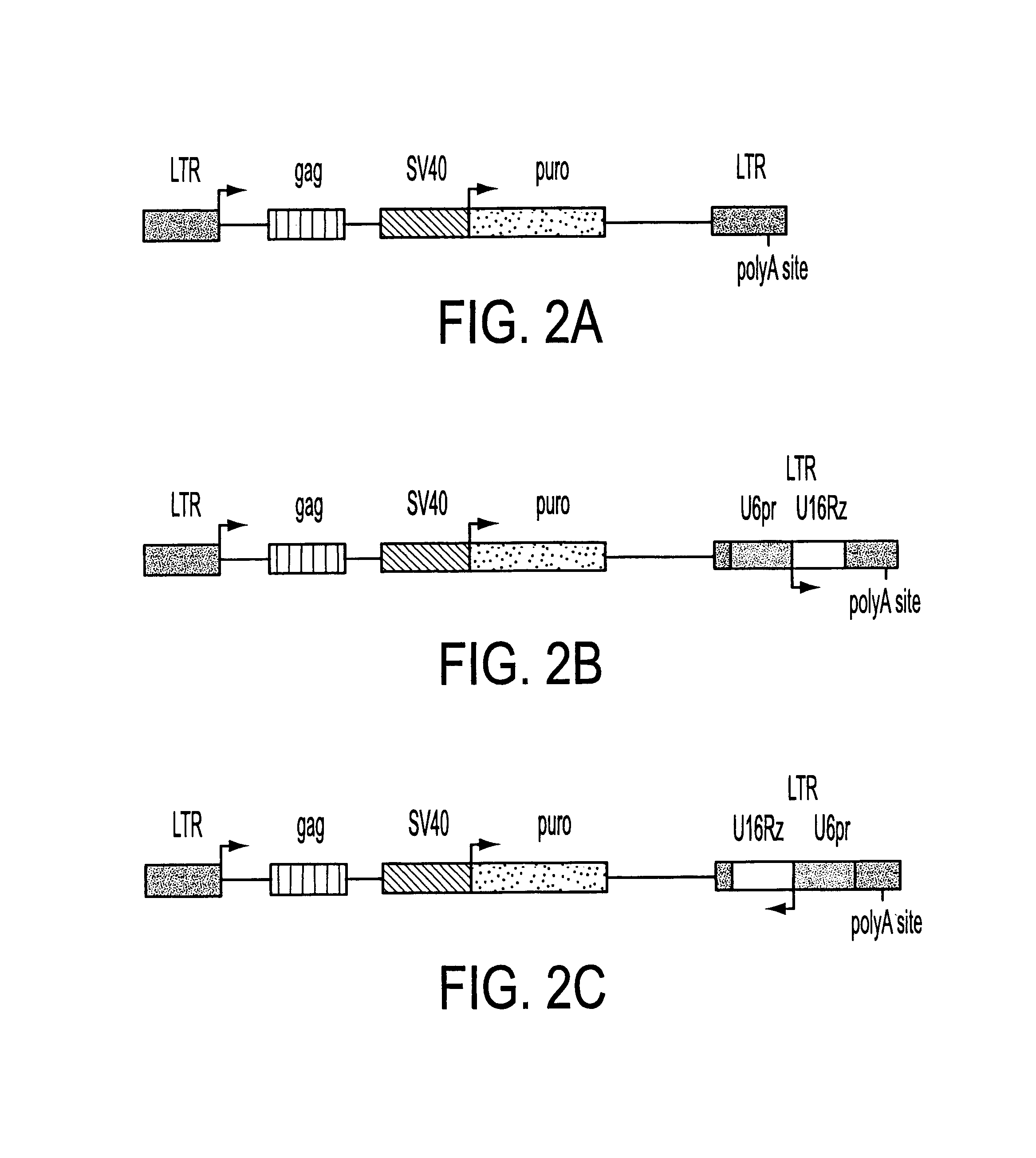Nucleolar targeting of therapeutics against HIV
a technology of nucleolar targeting and therapeutics, applied in the field of nucleolar targeting of therapeutics against hiv, can solve the problems of undeveloped aids cure, high mortality rate, and long life expectancy, and achieve high resistance, inhibit hiv replication, and high infection levels
- Summary
- Abstract
- Description
- Claims
- Application Information
AI Technical Summary
Benefits of technology
Problems solved by technology
Method used
Image
Examples
Embodiment Construction
[0032]There are two aspects to the invention. The first is the use of a human U16 snoRNA as a vector to deliver to a cell an anti-HIV-1 hammerhead ribozyme directed to a conserved sequence within the 5′ LTR sequence of the HIV-1 RNA. The second aspect of the invention is the use of a human U16 snoRNA as a vector to deliver to a cell a TAR element which binds Tat.
I. Use of a Human U16 snoRNA as a Vector to Deliver an Anti-HIV-1 Hammerhead Ribozyme
[0033]We have taken advantage of the catalytic activity and nucleolar localization properties of a C / D box motif snoRNA fused to an anti-HIV-1 hammerhead ribozyme to address the question of whether HIV-1 RNAs pass through the nucleolus. To determine whether this trafficking takes place, a hammerhead ribozyme targeted to a highly conserved sequence in the U5 region of HIV-1 was delivered into the nucleoli of human cells. The ability of this nucleolar-localized ribozyme to inhibit the replication of HIV-1 was demonstrated in HeLa CD4+ and CEM ...
PUM
 Login to View More
Login to View More Abstract
Description
Claims
Application Information
 Login to View More
Login to View More - R&D
- Intellectual Property
- Life Sciences
- Materials
- Tech Scout
- Unparalleled Data Quality
- Higher Quality Content
- 60% Fewer Hallucinations
Browse by: Latest US Patents, China's latest patents, Technical Efficacy Thesaurus, Application Domain, Technology Topic, Popular Technical Reports.
© 2025 PatSnap. All rights reserved.Legal|Privacy policy|Modern Slavery Act Transparency Statement|Sitemap|About US| Contact US: help@patsnap.com



